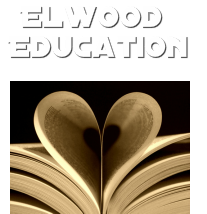"Everyday Use" Essay Guidelines
This list might not be exhaustive. Feel free to add other items.
IN GENERAL:
INTRO:
BODY PARAGRAPHS
CONCLUSION
TITLE
WORKS CITED PAGE
IN GENERAL:
- Before revising the entire essay. Make sure that you have a thesis that works.
- Then choose 3-4 points you would like to focus on and make each the thrust of a body paragraph. An essay does not need to follow the chronology of the story.
- MLA format (done correctly)
- Length requirement: 2 to 2.5 pages, not more than 3
- Avoid babyish language and word repetition.
- Don't put quotation marks around words and word groupings that are not significant, such as "her mother" or "after Grandma Dee." Author's don't get to own common expressions. Don't quote names. You can use someone's name, even if it came from a story.
- Type “said” in my search bar. Click on "Better Word Choices" and then "Words to replace said" or other helpful links. Use Control F to discover repetition.
- No slashes, anywhere
INTRO:
- Intro should be just 2-3 sentences.
- Thesis is one sentence and is last. Thesis establishes what Walker wants us to understand, not merely what happened. What is her message? The lesson she wants us to learn? The "should"? Use the word "should" if that helps.
- There will be no story quotes in the introduction or conclusion.
BODY PARAGRAPHS
- Set up dialogue and narration quotes correctly. Choose the best set up. Do not quote dialogue between two people in the same paragraph. Every change in speaker requires a paragraph break. This is awkward in an essay.
- If the page/paragraph info is the same for quotes in immediate succession in the same paragraph, only the last quote gets the numbers.
- Body paragraphs should be reasonably consistent in length, about 4" tall (or so). Short paragraphs make you look incapable of further development. Consider adding more analysis, another quote, or another example if needed.
- Use ellipses, brackets, and dashes correctly and sparingly. A dash is 2 minus signs, not 1. One minus sign is a hyphen. Use a hyphen for page spreads: (313-14).
- M-dash set up: word--word It will look like this: word—word
- N-dash set up: word -- word It will look like this: word – word
- If your two minus signs do not shift automatically into an N- or M-dash, just space before and after two minus signs: word -- word.
CONCLUSION
- This is usually the shortest paragraph in an essay: 1-2 sentences with no new info or story quotes.
- The first (or only) sentence should echo the thesis, but not restate it.
- Be philosophical and draw a conclusion.
TITLE
- Suggestions for using “Everyday Use” in the title: “Everyday Use”: XYZ OR XYZ in “Everyday Use”
- You do not need to include the story title in your essay title.
- Farm your conclusion for interesting and rarely used words to make your title intriguing and create a sense of full circle at the end.
WORKS CITED PAGE
- This is the last full page of the essay. Do not add the citation under the conclusion.
- To create a hard break, hold down Control and press enter. Refrain from hitting enter multiple times to land on the next page.
- A works cited page with one entry is titled Work Cited.
